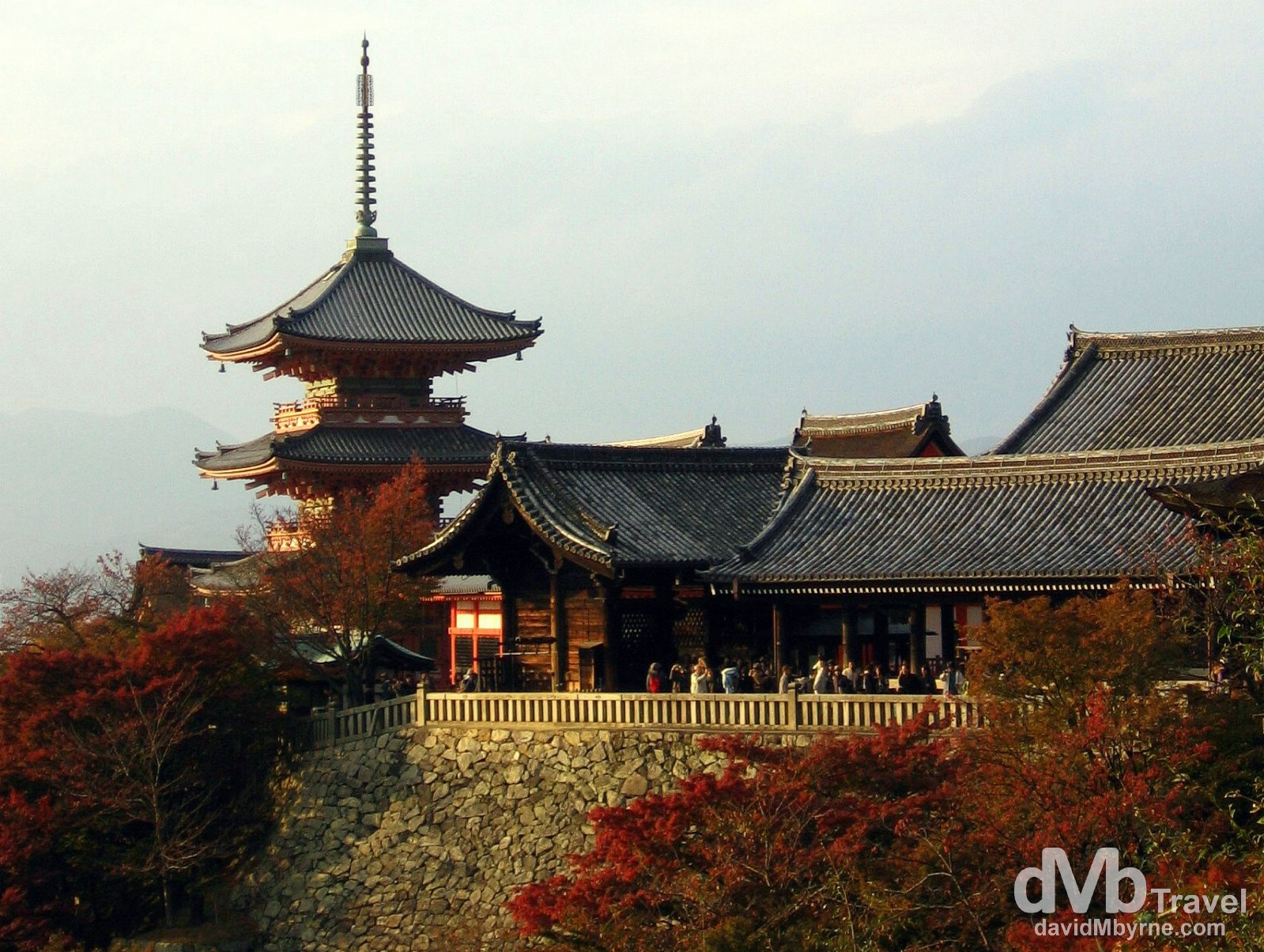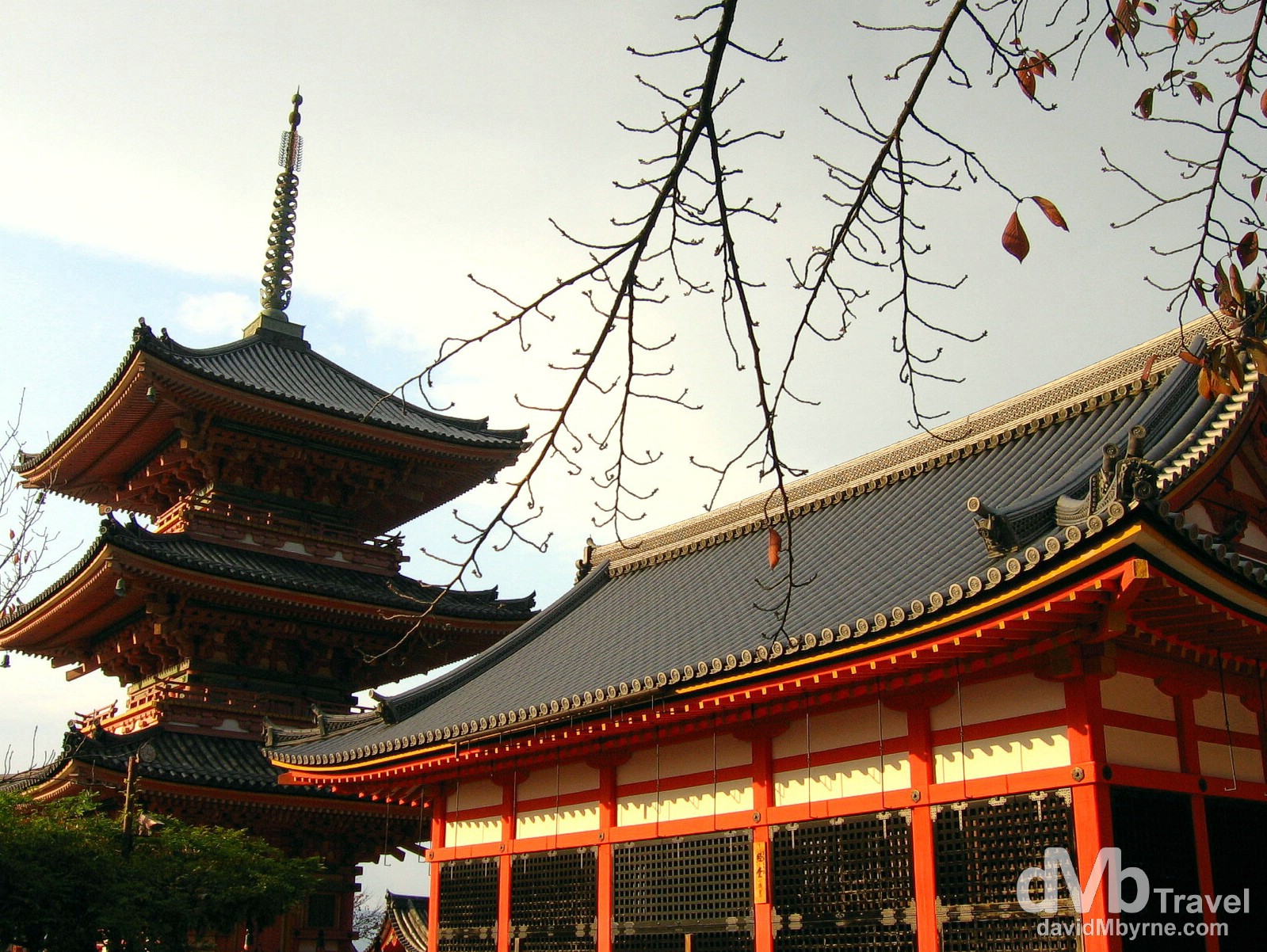Kiyomizu-dera Temple
One Of Japan’s Most Celebrated Temples & A New7Wonders Of The World Finalist
Kiyomizu-dera Temple, Kyoto, Japan. November 20, 2007
As the imperial capital of Japan for more than a thousand years, Kyoto conjures up the classic images of Japan: narrow lanes of traditional wooden teahouses; Geisha in a flourish of brightly coloured silks; & the inevitable weeping cherry tree surrounding idyllic temples. One of the best preserved cities in Japan & one of the oldest and most famous metropolises in all of Asia, UNESCO World Heritage-listed Kyoto is endowed with an almost overwhelming legacy of ancient Buddhist temples & Shinto Shrines (over 1600 of them in the city alone), majestic palaces, traditional Japanese gardens, and gorgeous teahouses.

Kiyomizu-dera (Pure Water) Temple, Kyoto (![]() ), Japan. November 20, 2007 || From a November 2007 visit to Kyoto, Japan
), Japan. November 20, 2007 || From a November 2007 visit to Kyoto, Japan
Kyoto’s most visited temple is the Kiyomizu-dera (Pure Water) Temple, one of the most celebrated temples of Japan. It was founded in 798 with the present structure dating to 1633 and remains associated with the Hosso sect, one of the oldest sects within Japanese Buddhism. It stands in the wooded hills in the east of the city and offers visitors beautiful views, visibility pending, from the famous wooden terrace/veranda of its Main Hall, from below which visitors can taste the spring water which gives the temple its name and which is said to have healing powers. The temple was added to the list of UNESCO World Heritage sites in 1994 & was one of the 21 finalist in 2007 for inclusion on the list of the New7Wonders of the World. It’s an especially popular place to visit in the spring when the surrounding hills are alive with cherry blossoms in bloom.
– UNESCO commenting on the Historic Monuments of Ancient Kyoto

The three-storied pagoda (and another orange building) in the grounds of the Kiyomizu-dera (Pure Water) Temple, Kyoto, Japan. November 20, 2007 || From a November 2007 visit to Kyoto, Japan
